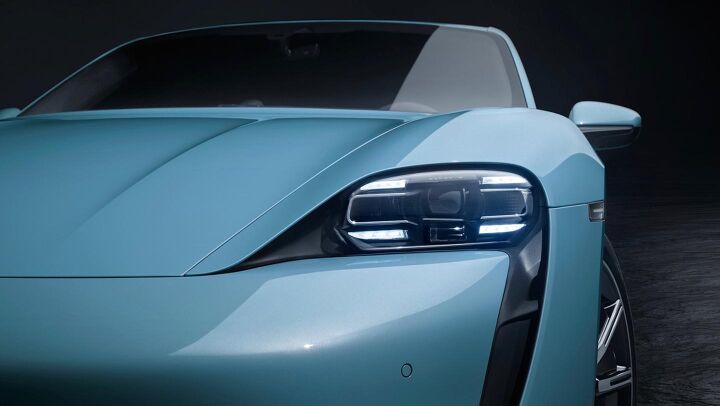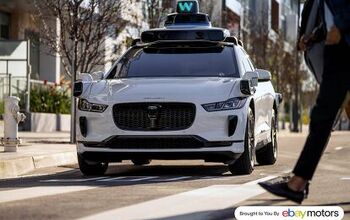Debatably Affordable Porsche Taycan 4S Launches Next Spring

While Porsche’s Taycan has been praised as unquestionably worthy of the Porsche name, it’s also subject to the brand’s (ahem) aggressive pricing structure. Gone are the days when you can purchase a basement-level Porsche 944 for the modern equivalent of $20,000. The cheapest model currently occupying the automaker’s portfolio is the 718, which sets you back 57 grand before you’ve added a single option.
When the Taycan debuted as Porsche’s first purely electric vehicle a number of weeks back, the model’s $150,900 (before destination) MSRP was expected. Porsche rolled out the higher-end “Turbo” trims first, with promises of more budget-minded models to follow. That car arrived today, and it costs $105,150.
Despite being $50k cheaper than the Turbo and $85k less dear than the Turbo S, Porsche’s Taycan 4S is far from an affordable electric. However, the company may have lowered the bar enough to open the vehicle up to more buyers — which is probably fine, considering the company is unlikely to have the ability to manufacturer BEVs in significant quantities right now. Few companies can.
Sacrifices have been made. The 4S lacks the oomph of the Turbo models, delivering 429 horsepower from twin electric drive motors positioned front and rear. While 522 hp can be had briefly with help from the vehicle’s launch control system, it’s a far cry from the Turbo S and its 616 hp … or 751 hp with launch control engaged.
Battery size is also limited to 79.2 kWh, though customers can select the “performance battery plus” version of the 4S ($110,380) with a 93.4-kWh, double-deck battery pack and 563 hp (with launch control). That model also boasts a maximum range of 287 miles on the WLTP cycle — the best the Taycan can currently muster. Both models hit 100 kph (62 mph) in 4.0 seconds, with Porsche specifying that both are to be electronically limited to 155 mph. While quite a bit slower than the Taycan Turbo S, which takes just 2.6 seconds to reach highway speeds, that’s still quick by modern standards.
The new pricing makes the model a more direct competitor to Tesla’s Model S, which still offers superior range at lower prices and similarly enviable (if not superior) acceleration figures. Though that’s hardly a dig at Porsche. Tesla has been at this EV stuff for much longer, and the Germans have said they wanted to spend a considerable amount of time perfecting the vehicle’s handling.
While largely similar to premium examples of the Porsche Taycan, 4S models receive smaller wheels/tires and their own front fascia. The rest is pretty much identical, minus battery size and output. All versions of the Taycan are all-wheel drive with permanent synchronous magnet motors driving each axle. The rear also uses the same two-speed transmission and 600-amp inverter with a 300-amp, pulse-controlled unit in the front.
Automated emergency braking, forward-collision warnings, and lane-keeping should all remain standard with Porsche hiding its more advanced driving aids (like adaptive cruise control) behind paywalls. Air suspension, keyless entry, eight-way power seats, and LED headlamps should also remain complementary — as will Apple CarPlay. But Porsche still does not support Android Auto.
Taycan vehicles are eligible for the $7,500 EV tax credit in the United States (plus any local incentives) and Porsche intends on offering free, 30-minute stints at Volkswagen Group’s Electrify America fast chargers for the first three years of ownership. The automaker said to expect 4S models to begin arriving at U.S. dealerships in the spring of 2020.
[Images: Porsche]

A staunch consumer advocate tracking industry trends and regulation. Before joining TTAC, Matt spent a decade working for marketing and research firms based in NYC. Clients included several of the world’s largest automakers, global tire brands, and aftermarket part suppliers. Dissatisfied with the corporate world and resentful of having to wear suits everyday, he pivoted to writing about cars. Since then, that man has become an ardent supporter of the right-to-repair movement, been interviewed on the auto industry by national radio broadcasts, driven more rental cars than anyone ever should, participated in amateur rallying events, and received the requisite minimum training as sanctioned by the SCCA. Handy with a wrench, Matt grew up surrounded by Detroit auto workers and managed to get a pizza delivery job before he was legally eligible. He later found himself driving box trucks through Manhattan, guaranteeing future sympathy for actual truckers. He continues to conduct research pertaining to the automotive sector as an independent contractor and has since moved back to his native Michigan, closer to where the cars are born. A contrarian, Matt claims to prefer understeer — stating that front and all-wheel drive vehicles cater best to his driving style.
More by Matt Posky
Latest Car Reviews
Read moreLatest Product Reviews
Read moreRecent Comments
- Spectator Wild to me the US sent like $100B overseas for other peoples wars while we clammer over .1% of that money being used to promote EVs in our country.
- Spectator got a pic of that 27 inch screen? That sounds massive!
- MaintenanceCosts "And with ANY car, always budget for maintenance."The question is whether you have to budget a thousand bucks (or euro) a year, or a quarter of your income.
- FreedMike The NASCAR race was a dandy. That finish…
- EBFlex It’s ironic that the typical low IQ big government simps are all over this yet we’re completely silent when oil companies took massive losses during Covid. Funny how that’s fine but profits aren’t. These people have no idea how business works.






































Comments
Join the conversation
I am told that the drift velocity of electrons in an electrical circuit is on the order of millimeters per second - one mm/sec equating to 0.002 MPH (or approximately 11 feet per hour). My question: Are the electrons any faster in Taycan "Turbo" models? (Because the pistons in my car move *way* faster... why just the other day I achieved a piston speed of 38 MPH!)
"Gone are the days when you can purchase a basement-level Porsche 944 for the modern equivalent of $20,000." The 944 launched for $18,600 in 1983, IIRC. There was instantly a waiting list and some world class gouging involved. That's about $47,600 in today's money. The 914 launched for $3,600 in 1970. That's about $24,000 today for a car that was sold as a VW in the rest of the world and would make a new Boxster look like an Acura in terms of standard equipment. Speaking of twenty grand, that's about what the price for the Taycan went up between the preproduction hype a few months ago and its arrival on the market.